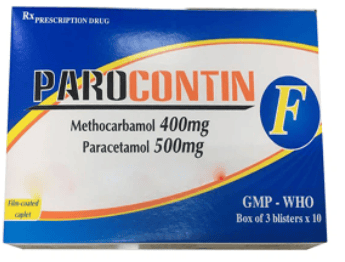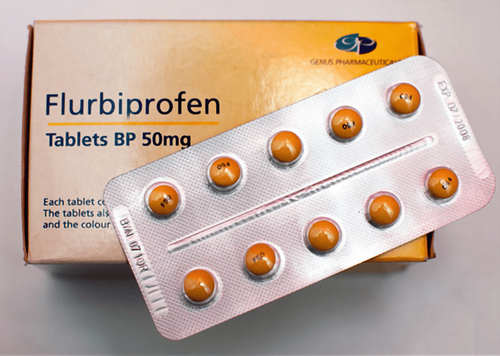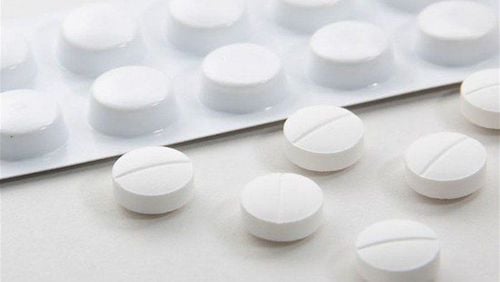This is an automatically translated article.
Volhasan is used topically to treat osteoarthritis, relieve pain, and help fight inflammation. The active ingredient in Volhasan is Diclofenac Sodium. So how effective is the use of Volhasan Creamgel? Things to keep in mind when using the drug will be shared through the article below.1. What is Volhasan Creamgel?
Volhasan Creamgel belongs to the group of analgesics, antipyretics, non-steroid anti-inflammatory drugs, drugs for the treatment of Gout and osteoarthritis. Volhasan is prepared in the form of a topical gel, packed in a box of 1 tube of 20g. Volhasan Creamgel contains the main ingredient is sodium diclofenac 1% and excipients just enough for 1 tube, with the use of treating tendon injuries, ligament injuries, muscle injuries and osteoarthritis.2. Indications for taking Volhasan Creamgel
Volhasan Creamgel is used in the following cases:
Treatment of injuries: Muscles, joints, tendons, ligaments, often sprains, strains, local arthritis and bruised skin. In this case, the effectiveness of response should be assessed after 14 days of treatment with Volhasan. Osteoarthritis in superficial joints such as the knee, consider improved outcomes after 4 weeks of treatment with Volhasan. It is not recommended to apply the drug to areas such as hips, shoulders and spine.
3. Dosage - How to take Volhasan Creamgel
3.1. How to use Volhasan Creamgel is used topically. Wash your hands before applying the medicine, then apply it evenly and gently all over the skin to be treated. It is necessary to abstain from bathing and washing within 1 hour after applying the medicine. Absolutely do not cover and heat the skin being treated, the area to be treated should avoid direct sunlight. Do not let the treated skin area come into contact with clothing after at least 10 minutes. 3.2. Dosage Depending on each subject and different medical conditions, there will be different doses and frequency of taking Volhasan Creamgel. Volhasan Creamgel is recommended for use in people 14 years of age and older with a total dose not exceeding 32g/day, specifically:
Knees, ankles and feet: Apply 4g Volhasan Creamgel/joint x 4 times/day. Up to 16g Volhasan Creamgel/day for any joint of the lower extremities. Elbows, wrists and hands: Apply 2g Volhasan Creamgel/joint x 4 times/day. Do not use more than 8g Volhasan Creamgel/day for any joint of the upper extremities. The duration of treatment for arthritis pain can be up to 7 days before pain improves and up to 14 days under the supervision of a physician. If the condition does not improve or complications are complicated, the patient should be examined and corrected. Do not take Volhasan Creamgel for more than 14 days without your doctor's advice. 3.3. How to handle missed dose, overdose Volhasan Creamgel? In case of missed dose: The patient can apply after remembering or skip the missed dose if it is almost time for the next dose of Volhasan Creamgel. Patients should note that Volhasan Creamgel should not be applied too thickly on the skin.
In case of overdose: Volhasan Creamgel has low systemic absorption, so an overdose is very unlikely. However, accidental ingestion by children or improper use can cause an immediate/emergency condition. Common symptoms of Volhasan overdose are as follows: Headache, dizziness, disorientation, nausea & vomiting, epigastric pain, gastrointestinal bleeding, tinnitus, coma, syncope,... Volhasan overdose currently has no specific antidote, need to take the patient to see a doctor immediately or emergency at the nearest medical center. The method used is mainly to induce vomiting and gastric lavage, in addition, it is necessary to treat symptoms and apply support.
4. Contraindications to taking Volhasan Creamgel
Volhasan Creamgel should not be used in the following cases:
Patients with hypersensitivity to Diclofenac or any other ingredient in the drug. Patients with a history of allergy to Aspirin or other active ingredients of the NSAID group with typical manifestations such as urticaria, asthma, rhinitis. The patient is in the stage of coronary surgery for artificial heart transplant. Children < 14 years old. Pregnant women in the last 3 months of pregnancy.
5. Side effects when taking Volhasan Creamgel
During the use of Volhasan Creamgel, patients may experience some unwanted side effects such as:
Common: Skin rash, skin irritation, rash, eczema, erythema, contact dermatitis touch, itch. Rare: Blisters. Very rare: Hypersensitivity reactions causing angioedema, urticaria, bacterial pustular rash, photosensitivity, asthma. Patients should immediately notify the doctor/pharmacist of any unwanted side effects that occur when taking Volhasan Creamgel for consideration and timely resolution.
6. Precautions when using Volhasan Creamgel
Here are a few notes for patients before using Volhasan Creamgel to ensure safety and effectiveness:
Avoid getting Volhasan Creamgel into eyes or mucous membranes. Studies have shown that Diclofenac Sodium has the ability to cross the placenta. However, there are no data on the extent of the effects of topical diclofenac in pregnant women. Therefore, only use Volhasan Creamgel when prescribed by a doctor with the lowest dose.. In the last 3 months of pregnancy, Volhasan Creamgel has the risk of inhibiting uterine contractions, increasing circulatory pressure irreversible and renal failure, causing premature closure of the ductus arteriosus, for the fetus. Volhasan Creamgel should be contraindicated in this case. Diclofenac sodium is excreted in breast milk in small amounts, however, when using topical gel, there are no specific reports. Therefore, mothers need to consult a medical professional. When using Volhasan Creamgel, it is necessary to avoid the risk of swallowing or getting into the eyes/nose, causing danger to the child. Volhasan Creamgel is for topical use and acts locally, so it does not affect the ability to drive or use machines. Do not apply Volhasan Creamgel to open wounds, avoid using it simultaneously with other cosmetics (sunscreen, lotion, ..) and other external preparations on the same treated skin. When using Volhasan Creamgel, patients should have their liver enzymes determined regularly. After using the drug, it should be closed with a tight lid, stored Volhasan Creamgel at room temperature, avoiding direct sunlight, avoiding mold and microorganisms from entering. Keep Volhasan Creamgel out of reach and play areas of children.
7. Volhasan Creamgel drug interactions with other drugs
Volhasan Creamgel for topical use, the rate of systemic absorption is low, so drug interactions occur relatively small. However, topical diclofenac sodium still causes synergistic reactions with other oral NSAID drugs or aspirin-containing preparations.
Do not combine Volhasan Creamgel with oral anticoagulants, antiplatelet drugs, Heparin may increase the risk of major bleeding. Do not combine Diclofenac with Quinolone antibiotics due to the increased risk of side effects on the central nervous system and convulsions. Not concurrently combining Diclofenac with Diflunisal can reduce elimination, increase plasma concentration of Diclofenac, cause severe gastrointestinal bleeding. Lithium, Digoxin should not be combined with Diclofenac, it may reduce clearance by Diclofenac, prolong the half-life, and easily cause toxicity to the body. Ticlopidine taken with Diclofenac may increase the risk of bleeding. Diclofenac co-administered with methotrexate also causes an increase in methotrexate plasma concentrations, causing greater toxicity, especially in patients with impaired renal function or being treated with high doses of methotrexate. Diclofenac has been reported to deactivate the effectiveness of intrauterine devices. Cyclosporin concomitant treatment with Diclofenac may increase the risk of toxicity, so patients should be closely monitored for renal function. Antihypertensive drugs, Beta-blockers, diuretics should be used with caution when co-administered with Diclofenac. Diclofenac when combined with diuretics also increases the possibility of secondary renal failure if used with Diclofenac. Antacids, Cimetidine co-administered with Diclofenac reduces intestinal irritation well but at the same time reduces serum Diclofenac concentrations. Probenecid co-administered with Diclofenac may double the concentration of Diclofenac, consider dose reduction as appropriate. Antidiabetic drugs need to be adjusted appropriately when combined with Diclofenac. Patients should be monitored blood glucose levels during use with Diclofenac. Mifepriston because it can reduce its therapeutic effect. Hopefully, the information shared above can help readers have a lot of useful information on how to use the drug and the notes when using Volhasan Creamgel for treatment. Patients should always strictly follow the instructions from their doctor or pharmacist when taking Volhasan Creamgel.
Please dial HOTLINE for more information or register for an appointment HERE. Download MyVinmec app to make appointments faster and to manage your bookings easily.













